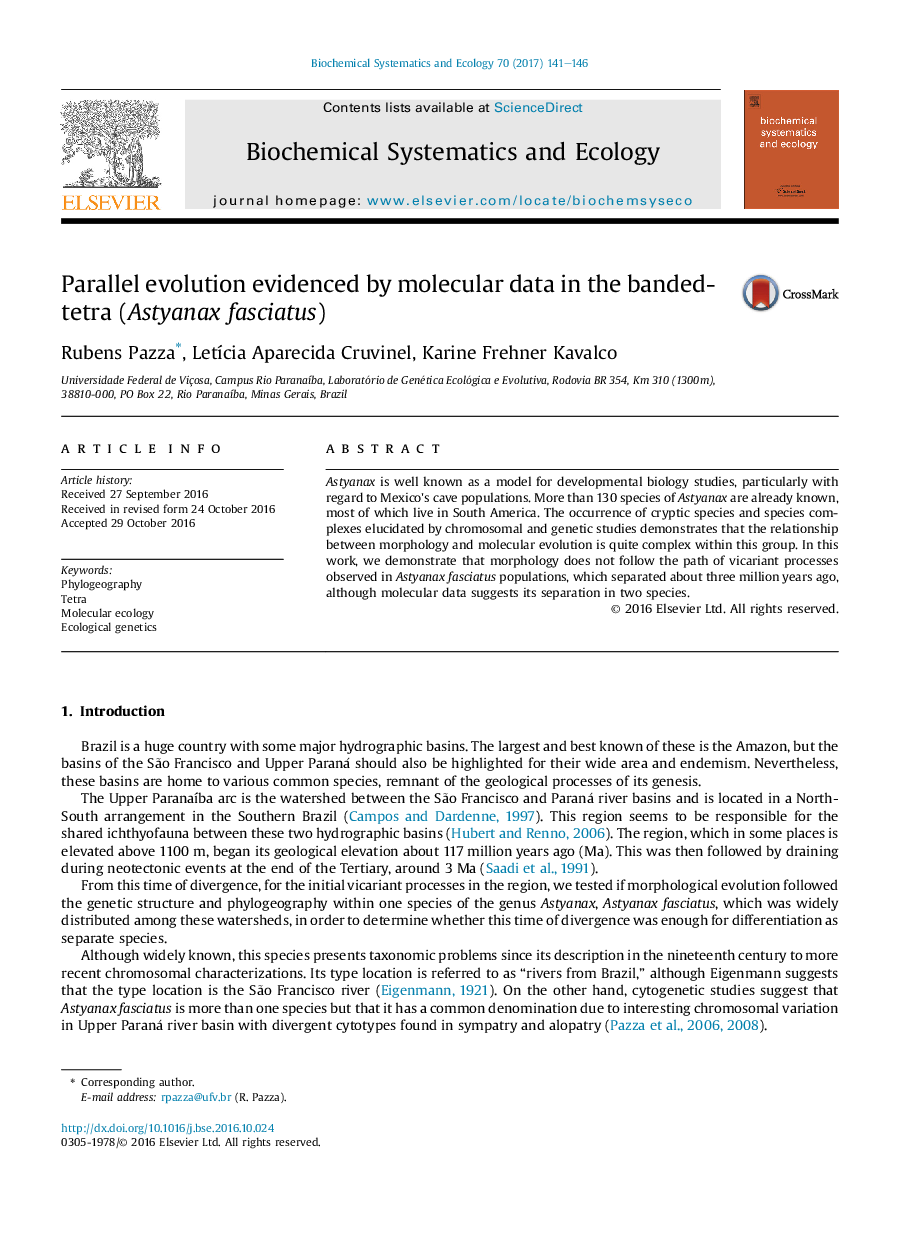| Article ID | Journal | Published Year | Pages | File Type |
|---|---|---|---|---|
| 5154974 | Biochemical Systematics and Ecology | 2017 | 6 Pages |
Abstract
Astyanax is well known as a model for developmental biology studies, particularly with regard to Mexico's cave populations. More than 130 species of Astyanax are already known, most of which live in South America. The occurrence of cryptic species and species complexes elucidated by chromosomal and genetic studies demonstrates that the relationship between morphology and molecular evolution is quite complex within this group. In this work, we demonstrate that morphology does not follow the path of vicariant processes observed in Astyanax fasciatus populations, which separated about three million years ago, although molecular data suggests its separation in two species.
Related Topics
Physical Sciences and Engineering
Chemistry
Organic Chemistry
Authors
Rubens Pazza, LetÃcia Aparecida Cruvinel, Karine Frehner Kavalco,
